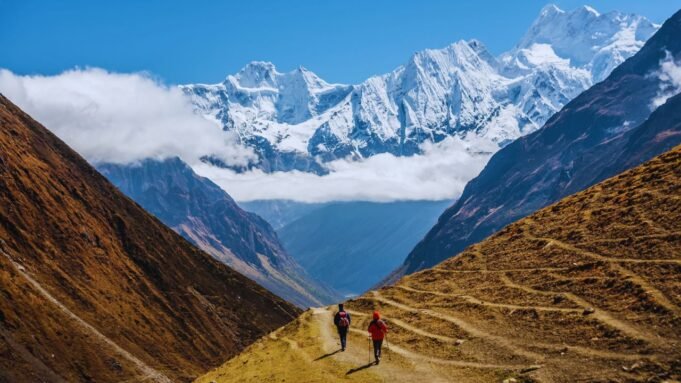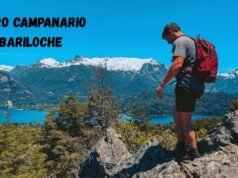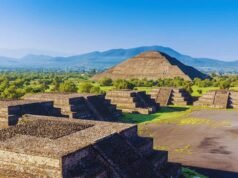The Manaslu Circuit Trek is a mesmerizing adventure through one of Nepal’s most remote and untouched trekking regions. Circling Mount Manaslu, the world’s eighth-highest peak at 8,163 meters (26,781 ft), this trek offers a stunning blend of natural beauty, cultural immersion, and high-altitude challenge.
The trail takes you through diverse landscapes from subtropical forests to alpine terrain while passing through traditional Tibetan-influenced villages that provide a glimpse into a lifestyle that has remained unchanged for centuries.
Often regarded as a less-traveled alternative to the more popular Everest and Annapurna circuits, the Manaslu Circuit Trek is perfect for those seeking solitude, cultural authenticity, and breathtaking mountain vistas.
Manaslu Circuit Trek Itinerary Overview
The Manaslu Circuit Trek usually takes between 14 and 18 days, depending on the pace, acclimatization days, and travel arrangements. The trek starts in Soti Khola and ends in Dharapani, crossing diverse terrains, passing traditional villages, and culminating in the crossing of the high-altitude Larkya La Pass (5,106 meters). A typical Manaslu Circuit Trek itinerary tends to include gradual altitude gains, rest days in villages like Samagaon, and opportunities for optional side hikes to viewpoints or monasteries.
Why Choose the Manaslu Circuit Trek?
The Manaslu Circuit Trek offers several unique features that make it a standout option for adventurous trekkers:
- Remote Trails: The Manaslu region is less crowded than other popular trekking routes, providing a more peaceful and intimate experience.
- Cultural Experience: The trek passes through isolated villages with strong Tibetan cultural influences, where visitors can explore monasteries, stupas, and prayer wheels.
- Spectacular Scenery: The landscape is ever-changing and captivating from lush river valleys to panoramic views of snow-capped peaks.
- Challenging Adventure: With its high-altitude passes and rugged terrain, the Manaslu Circuit presents a rewarding physical challenge for experienced trekkers.
This trek is ideal for those who want to experience Nepal’s natural beauty and cultural heritage while avoiding the large crowds on more popular routes.
Best Time to Trek the Manaslu Circuit
The best seasons for the Manaslu Circuit Trek are spring (March to May) and autumn (September to November). These periods offer stable weather, clear skies, and comfortable trekking temperatures. Spring brings blooming rhododendrons, while autumn offers crisp mountain views after the monsoon rains. Winter and monsoon seasons are less ideal due to heavy snowfall and rain, making trails difficult to navigate.
Places to Visit While on the Manaslu Circuit
Here’s a simplified paraphrase of the provided text:
- Tsum Valley with Mu Gumpa: Tsum Valley, located near the Tibetan border, has a culture similar to Tibet. The main activities here are tourism, farming, and monastic life.
- Serang Gompa (3,100 m): Also called Nubri Gumba, this monastery sits above Bhi village near Tibet. It has been a place of meditation for over 500 years.
- Kal Tal (‘Death Lake’, 3,600 m): A 4-hour hike from Prok village, this lake offers stunning views and holds religious importance.
- Hang Gompa and Himalchuli Base Camp (4,020 m): A beautiful monastery near Bihi, reachable after an hour’s walk through a pine forest.
- Phungen Gompa (4,050 m): A scenic monastery near Shyalla or Sama Gaon, offering breathtaking views in the Manaslu Base Camp trek area.
- Birendra Tal (3,450 m): A glacial lake near Sama Gaon, just an hour’s walk away. You can swim or dip your feet here.
- Manaslu Base Camp (4,900 m): The starting point for Manaslu expeditions, a 4-hour hike from Sama Gaon, offering incredible views of the lake, glaciers, and landscapes.
What to Pack for the Manaslu Circuit Trek?
Packing for the Manaslu Circuit requires careful planning. Key items include:
- Warm, layered clothing for changing weather conditions
- Good-quality trekking boots
- Sleeping bag (rated for cold weather)
- Trekking poles for stability
- Snacks and water purification tablets
- Permits and travel insurance
- First aid kit and medications for altitude sickness
Manaslu Circuit Trekking Permits
Trekking permits are crucial for any trek in Nepal, and for the Manaslu Circuit Trek, you need several permits before starting. These include the Manaslu Conservation Area Permit, the Restricted Area Permit (RAP), and the Annapurna Conservation Area Permit (ACAP).
The Manaslu Conservation Area Permit costs about NRS 3,000 (USD 30) for non-SAARC nationals and NRS 1,000 for SAARC nationals. Similarly, the ACAP also costs around NRS 3,000 (USD 30) for foreign nationals and NRS 1,000 (USD 10) for SAARC nationals.
The Restricted Area Permit (RAP) varies by season. From September to November, it costs USD 100 per person for the first week, with an extra USD 15 per day if the trek exceeds a week. From December to August, the cost is USD 75 for the first week and an additional USD 10 per day for longer stays.
The TIMS (Trekking Information Management System) permit isn’t required for this trek, as the special trekking permit covers it. However, if you plan to extend your journey to Annapurna Base Camp, you’ll need the TIMS permit too.
Trekking Challenges and Tips for Success
The Manaslu Circuit is a challenging trek, especially due to high altitudes. Proper acclimatization, hydration, and pacing are crucial to avoiding altitude sickness. Maintaining a good fitness level before the trek, staying hydrated, and listening to your body are essential for a safe and successful journey.
- Acclimatize Properly: Take rest days to adjust to altitude and avoid sickness.
- Hire a Guide: Guides are mandatory and helpful for navigating the restricted area.
- Pack Light: Bring essential gear only, as porters and you will carry the load.
- Stay Hydrated: Drink plenty of water to prevent altitude-related issues.
- Respect Local Culture: Be mindful of local customs and traditions in villages.
- Prepare for Weather: Layer up for varying temperatures, from warm valleys to freezing passes.
- Start Early: Begin trekking early each day to avoid afternoon weather changes.
Difficulty level of the Manaslu Circuit Trek
The Manaslu Circuit Trek is considered a challenging trek due to its remote location, high altitudes, and rugged terrain. Trekkers must navigate steep ascents, cross suspension bridges, and traverse the Larkya La Pass at 5,106 meters (16,752 ft). The high-altitude environment increases the risk of altitude sickness, requiring proper acclimatization.
Daily treks can range from 5 to 8 hours, with some sections being physically demanding. The trail conditions vary from forested paths to rocky, snow-covered landscapes. It’s best suited for trekkers with good fitness levels and prior high-altitude trekking experience.
Conclusion
The Manaslu Circuit Trek offers an unforgettable journey through remote Nepalese landscapes, rich in natural beauty and cultural heritage. From its towering mountains and serene monasteries to the thrill of crossing the Larkya La Pass, this trek provides adventure and wonder at every turn. With the right preparation and respect for its challenges, the Manaslu Circuit promises an experience like no other.















